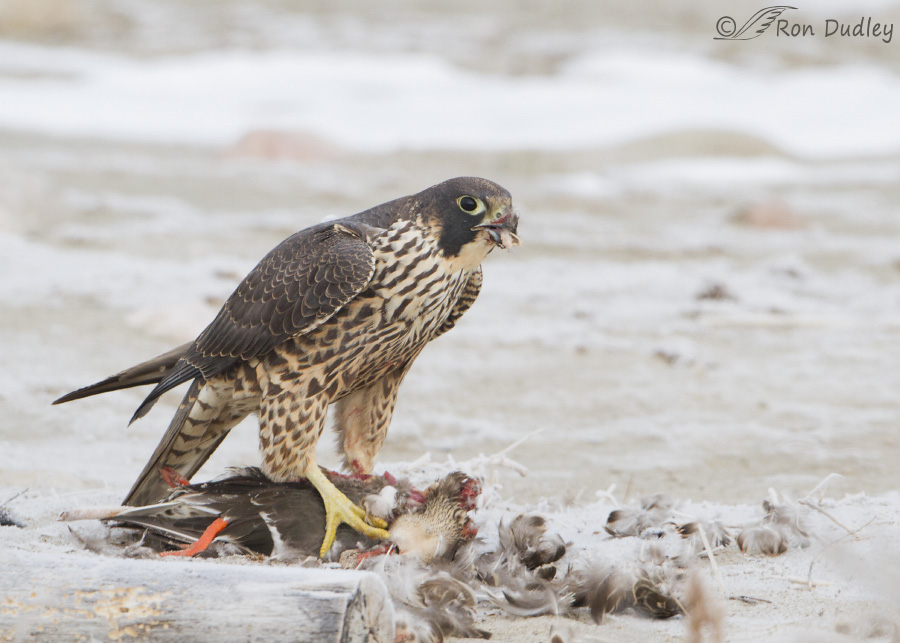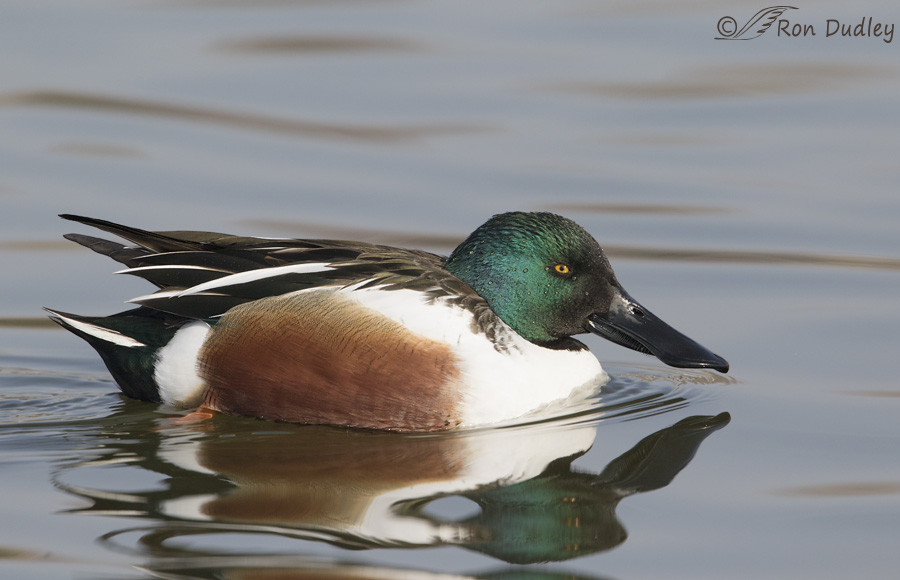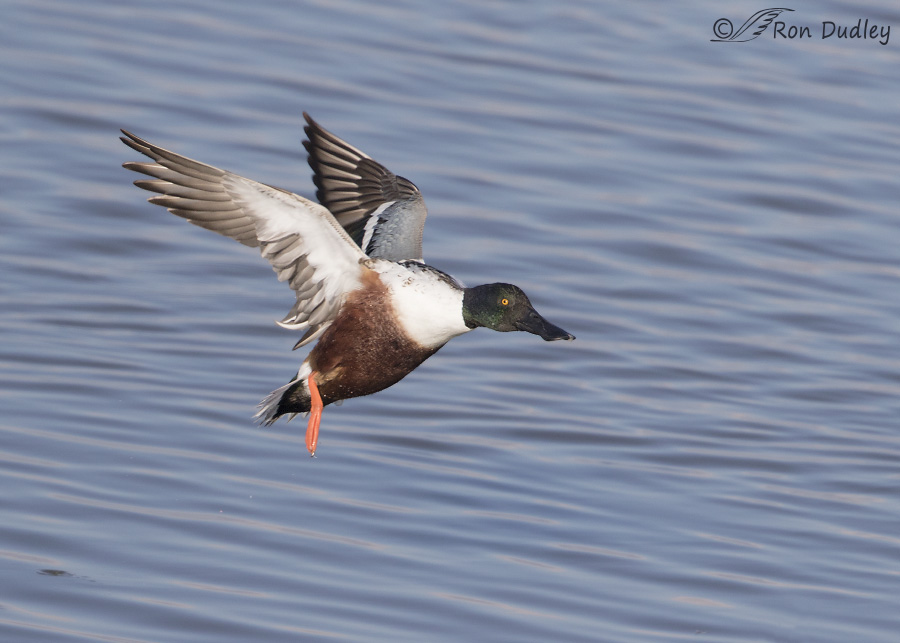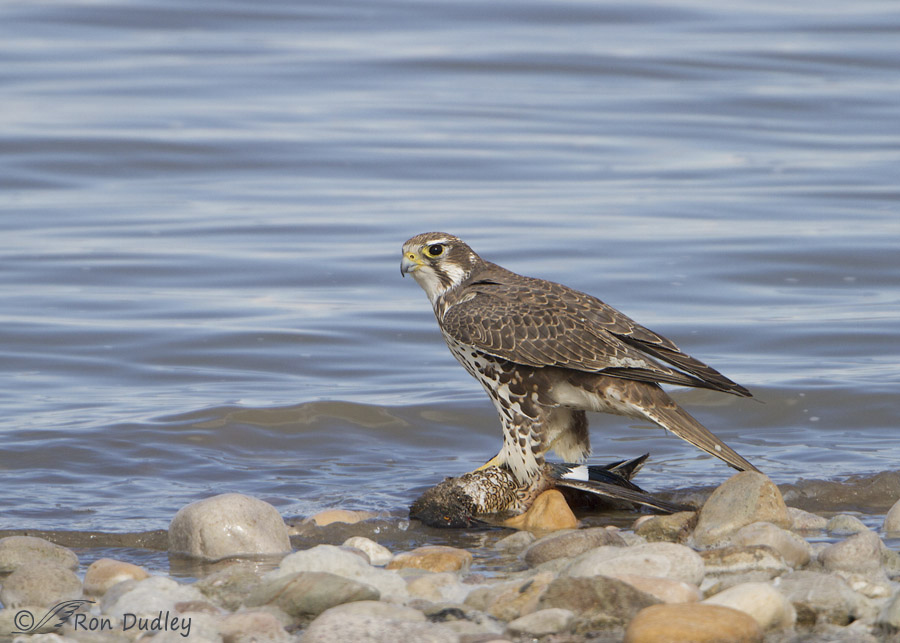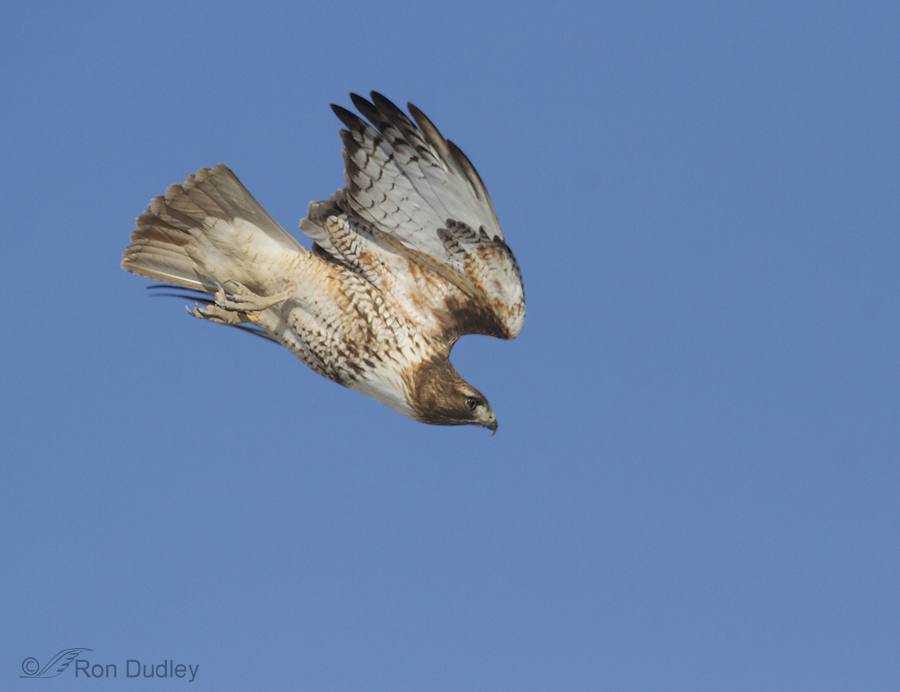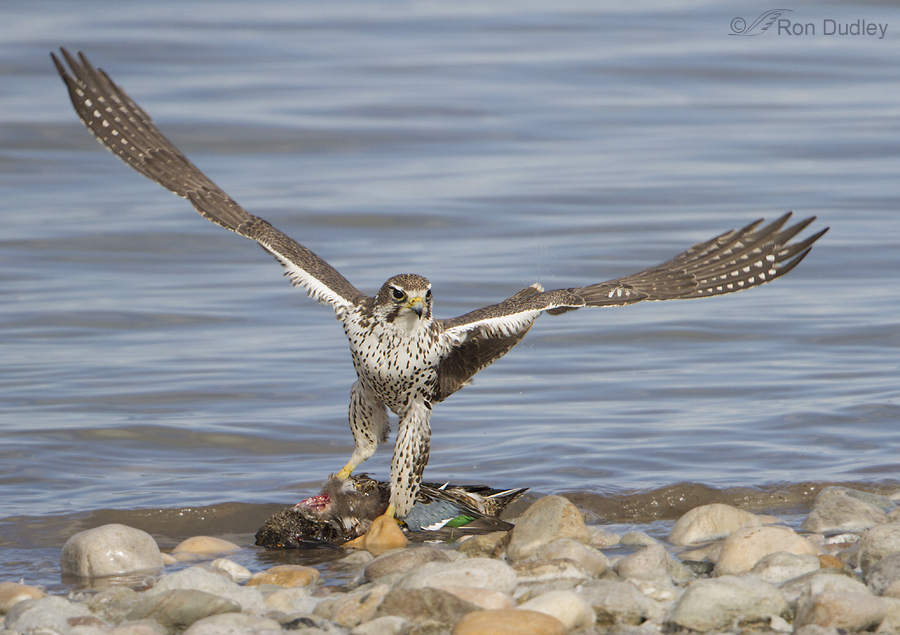Tag: northern shoveler
Northern Shoveler – Just Because I Like It
Northern Shoveler Just Before Splash-down
Prairie Falcon With Prey
Red-tailed Hawk In A Steep Dive (and a point about rotation)
Prairie Falcon – A Fascinating Hunting Strategy
The Prairie Falcon And The Northern Shoveler
Back in November I blogged about my encounter with a Prairie Falcon and its Northern Shoveler prey. I thought that some of the images I didn’t use back then were worthy of another post. This falcon struck the duck on the water, then waited for it to die and to be washed up onto shore. 1/2500, f/6.3, ISO 640, 500 f/4, 1.4 tc, natural light, not baited, set up or called in It attempted to enjoy its meal at the water’s edge but waves kept coming in and “rocking the boat”… 1/2500, f/6.3, ISO 640, 500 f/4, 1.4 tc, natural light, not baited, set up or called in so the falcon decided to drag the shoveler further up the rocky shore and away from the annoying waves. 1/2500, f/6.3, ISO 640, 500 f/4, 1.4 tc, natural light, not baited, set up or called in It wasn’t an easy task. Average weight for Northern Shovelers is almost as much as it is for Prairie Falcons (1.3 vs 1.6 lbs) so the falcon really struggled in its attempt to drag the duck to a more suitable dining area. 1/2500, f/6.3, ISO 640, 500 f/4, 1.4 tc, natural light, not baited, set up or called in I thought this was an interesting shot with the wings up, the left foot off the ground and direct eye contact. 1/2500, f/6.3, ISO 640, 500 f/4, 1.4 tc, natural light, not baited, set up or called in Finally the falcon was satisfied with the…
Attack Of The Shoveler
Most Northern Shovelers breed far north of my area (northern Utah) so I rarely get to see their intensely agonistic breeding behaviors but I’ve seen and photographed some of it in mid-June at Red Rock Lakes National Wildlife Refuge in sw Montana. Northern Shovelers are the most territorial of all dabbling ducks and the sexes remain paired longer than any other species. Both of these factors contribute to their aggressive natures. These three sequential shots don’t have great image quality but I do think they illustrate some interesting behavior. 1/2000, f/7.1, ISO 500, 500 f/4, 1.4 tc I’d been photographing Short-eared Owls from my pickup but was aware of some activity from shovelers in the marshy grasses nearby. A commotion got my attention just in time to see the male on the right fly in to attack another male on the water. The second bird saw the attack coming and decided that discretion was the better part of valor and rose from the water in a hasty retreat. I like the non-plussed look of the retreating bird. 1/2000, f/7.1, ISO 500, 500 f/4, 1.4 tc In this second image of the series it’s not clear if the open bill of the incoming bird is due to aggressive vocalization or an attempt to bite the other male. 1/2000, f/7.1, ISO 500, 500 f/4, 1.4 tc But in this last image I think it becomes obvious that the intent was to bite the retreating duck. Bird behaviors fascinate me. They’re often both interesting and entertaining but many of…
My Recent Encounters With The Female Prairie Falcon
As regular readers of my blog know, I’ve had four close-up encounters with this female Prairie Falcon on the Antelope Island causeway over the last couple of months. I couldn’t resist posting some images of her in different poses that I haven’t published here previously. There is general agreement among folks who are much more knowledgeable about falcons than I am that it was the same bird in all four cases. 1/640, f/4.5, ISO 640, 500 f/4, natural light, not baited, set up or called in Here she is on 10/7/12. I’ll never forget that morning because she let me get closer than I had ever been to a wild Prairie Falcon (even had to remove my tc). But there was a tradeoff (isn’t there always?) because the reason she felt so secure was that she was in deep shade, which isn’t the best situation for photography. Still, I’m happy to have the images of her that morning. 1/2000, f/6.3, ISO 640, 500 f/4, 1.4 tc, natural light, not baited, set up or called in A little over a month later (11/11/12) she killed a Northern Shoveler in the water about 50 yards out and waited for it to drift to shore. Here she has just claimed her prize and seemed to raise her wings in celebration. 1/2500, f/6.3, ISO 640, 500 f/4, 1.4 tc, natural light, not baited, set up or called in She attempted to enjoy her meal on the shore edge but waves kept coming in and sloshing the duck around so she decided to drag it further away…
An Incredible Experience With A Prairie Falcon And A Hapless Duck
This morning on Antelope Island was a photographic bust – heavy snow coming down most of the time and no light to speak of. So finally, after several hours of hoping the clouds would clear, we put our tails between our legs and headed for home. Talk about perfect timing! We’d traversed about half the causeway when the clouds parted, light blossomed and a serendipitous adult Prairie Falcon appeared, hunting for ducks. The falcon ambushed this male Northern Shoveler just as I was getting my pickup in position, so I missed that shot but this one was taken within a second or two of the strike. The duck is bleeding heavily. It struggled for a minute or so, and then died in the water. After the attack, the falcon would perch along the causeway for a short period, then take off and fly over the duck. This was done repeatedly. With my 500mm plus tc I could never get both the duck and the falcon in the image – this is as close as I came. 1/1600, f/5.6, ISO 500, 500 f/4, 1.4 tc, natural light, not baited, set up or called in Here, the falcon is perched to watch the duck out on the water. 1/2500, f/5.6, ISO 500, 500 f/4, 1.4 tc, natural light, not baited, set up or called in I had a difficult time locking focus on the falcon as it buzzed the duck because the textured water background was so close to the bird. I kept getting sharp shots of…
Prairie Falcon In Flight, With Prey
This image may look familiar to some viewers because I’ve previously posted another photo of this bird with a different wing position. I only got those two sharp shots of the falcon and I’d never processed this image before because the bird was too tight in the frame. I’d actually forgotten about this photo until recently when I decided it was worth making the effort to add some canvas to improve the composition. 1/2000, f/6.3, ISO 500, 500 f/4, natural light, not baited, set up or called in I found this juvenile feeding on its duck kill along the Antelope Island causeway last winter on a dark and blustery late morning. Two ravens began to harass the falcon with the apparent intention of stealing the duck so the rightful owner of the prey took off with the prize in tow. Within seconds, an adult Bald Eagle moved in and forced the falcon to drop the duck. One thing I find interesting about this image is the angle of the bird to the horizon – it looks like it’s flying downward, but in reality it’s actually gaining altitude. Normally, with the bird at this flight attitude, I’d rotate counterclockwise a little to make the flight angle more realistic looking, but since the horizon is in the background it’s obvious that the shot doesn’t need rotation since the horizon is level. The reason for the angled flight attack is the load that the falcon is hauling while it’s trying to gain altitude. The lower background is the dark, stormy and…
Peregrine Falcon Feeding Behavior (graphic)
The Peregrine Falcon has always been a nemesis bird for me. I’ve occasionally seen them far off, either in flight or perched, but have never been able to get close to one. All that changed last week when I spent an incredible half hour very close to a young bird while it was feeding on a female Northern Shoveler. That’s the good news. The bad news is that there was no LIGHT! DAMMITALL! It was heavily overcast with only a bright spot in the clouds to mark the position of the sun. As usual, this kind of situation requires lots of compromises between shutter speed, ISO, depth of field, motion blur, catch lights, ad infinitum… So compromise I did but I still got many feeding behavior images I find interesting. And since one of the primary focuses of this blog is bird behaviors, you guessed it – a blog post… First – a warning. Some of these photos are graphic. Proceed with caution if your sensitivities are fragile. 1/250, f/5.6, ISO 640, 500 f/4, 1.4 tc As I first approached this falcon it was depluming the duck. At times feathers were flying everywhere but at these shutter speeds and apertures many of those shots ended up in the delete bin. At this point I was still using the 1.4 teleconverter but the bird soon let me approach close enough that I was able to ditch the tc and get slightly more shutter speed. Take visual note of the size of the crop in this image when the falcon has just begun…


